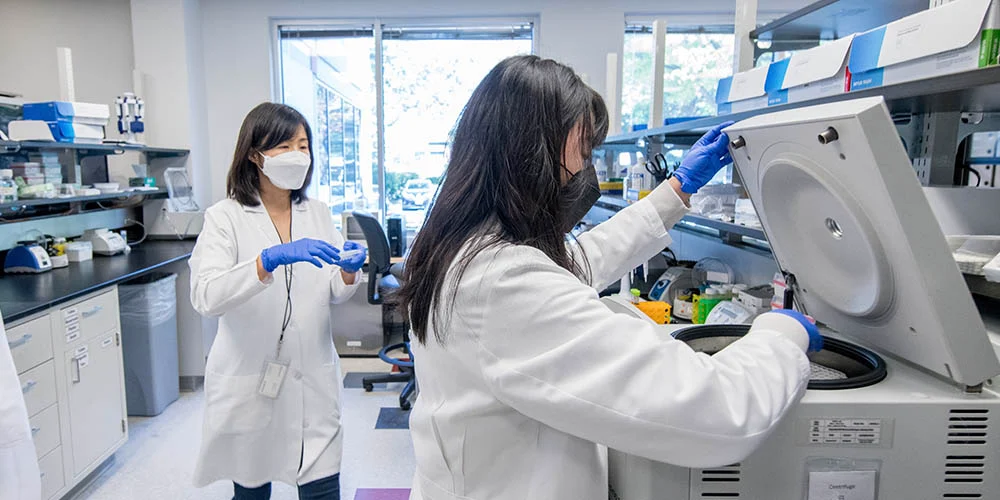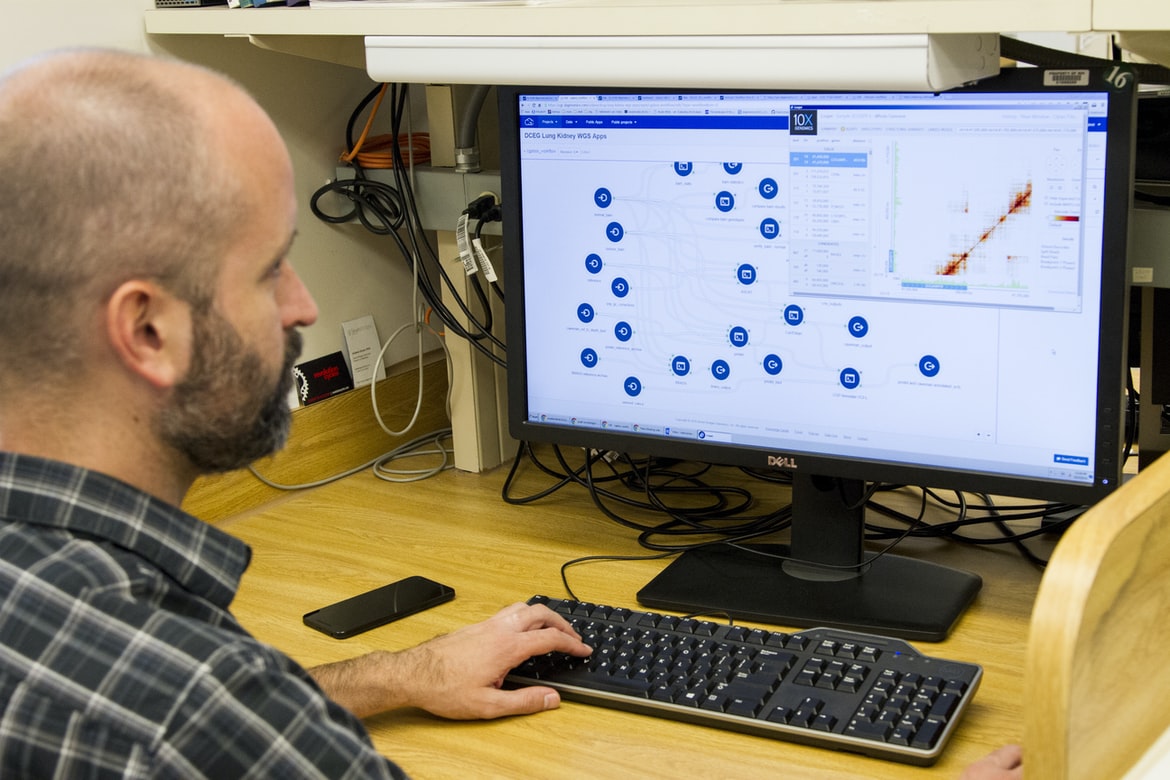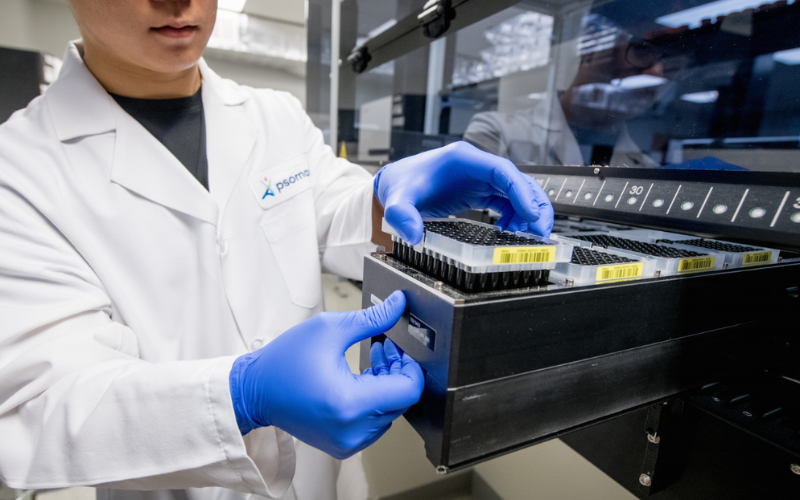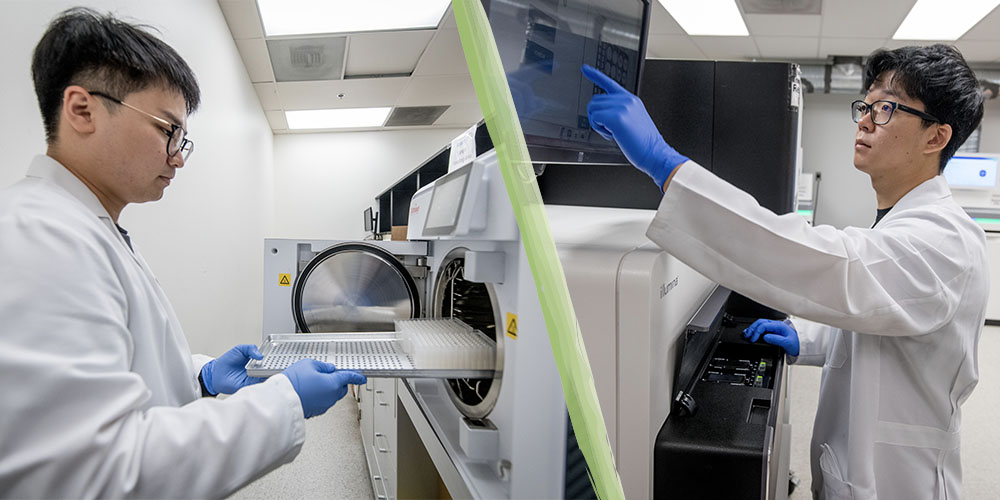Science fiction fans remember the Star Trek tricorders that rapidly rendered a diagnosis or the database that could provide the entire past and present information (even the molecular details) of a scanned planet. The state of science, as we live today, reflects the path to bring many of these concepts into fruition. Although discovering the details of the massive human genome seems a dream or a science fiction-quality endeavor, we are watching this very discovery unfold in the world of DNA sequencing.
When Sanger sequencing became the gold standard to identify mutations in DNA, there were still limitations that made it difficult to be used as a routine diagnostic tool1. Some of these limitations included the labor intensiveness of the method when characterizing very large gene sequences. This was particularly apparent for rare genetic conditions. Next, the prohibitive expense for patients is an equally important factor in the utility as a diagnostic tool.
With Sanger sequencing, the average cost of genomic sequencing is in the ballpark of $1 per kilobase. For a 700Mb genome (and this is a conservative example), that amounts to a whopping $7,000,000 to get the job done. The current effort demanded by the diagnostic medical community is the achievement of the $1000-genome. The fantastic news is that we are actually close to that goal.
Accuracy of Genomic Data
Lowering the genome sequencing cost is not the only milestone, however. First and foremost, the information obtained must come accurately and quickly. In his book “The $1000 Genome: The Revolution in DNA Sequencing and the New Era of Personalized Medicine”, Kevin Davies discusses the development of next-generation sequencing (NGS) technology and the impending achievement of producing genome sequencing data while breaking the $1000 cost barrier2. The advent of NGS has ushered in an era of a cost-effective, accurate, and high-throughput means of genomic sequencing3. Next-generation sequencing is a parallel sequencing platform allowing multiple regions of a genome to be analyzed in a single reaction4. That is, multiple genes can be examined in just one reaction increasing the utility of genomic sequencing for clinical diagnostics.
Speed and Costs
This NGS approach has allowed an extraordinary reduction in both the speed and cost of sequencing while maintaining high accuracy. What once took years now only takes days. In addition to the approach of NGS itself, the equipment and data handling (via the use of bioinformatics) are integral components of the new technology. For example, the new sequencer called the HiSeq X from our parent company, Illumina is reported to be capable of producing up to an astounding 1.8 terabases of data from a 3-day run. Further, this is achieved at 30X coverage (the number of times each base is read by the machine).
Using this Technology
Sequencing that targets the protein-coding regions of DNA (whole-exome sequencing, WES) has historically been associated with lower costs overall. However, this approach allows sequencing of only about 2% of the genome. Whole-genome sequencing (WGS), on the other hand, allows the sequencing of other important sequences such as enhancers and promoters. It is estimated that 1% of human diseases caused by single base-pair mutations are associated with mutations in promoter regions5. A number of diseases caused by mutations in promoters have been described including hemophilia, pyruvate kinase deficiency, and familial hypercholesterolemia6.
Next-generation sequencing is now providing a reduced-cost means to perform WGS making it more assessable for the reasons that were previously attributed to WES. The application of NGS has challenged and reduced the WES price advantage. The availability of accurate and cost-effective sequencing to diagnostic laboratories and doctors’ offices will make it possible to rapidly determine if someone has a predisposition to developing a particular disease if a person even has a rare genetic disorder, and how to best treat an individual´s disease. Targeted therapy will be a reality that can help alleviate symptoms of a condition while limiting the trial and error that can lead to suboptimal treatment plans. It will also help to reduce the anguish and stress of the unknown and decrease the incidence of detrimental misdiagnoses.
There are some things to watch out for when applying NGS to the clinical setting. Knowing too much can also lead to anguish and focusing on the negatives associated with having the genetic information. For this, genetic counseling is paramount as an adjunct to genomic diagnostics7. The process proposed by Berg et al. (“binning”) can allow for systematic WGS data management (in a category-based manner) that is needed for patient consent and education7.
Combing speed, accuracy, and comprehensiveness in sequencing have great utility in both clinical and non-clinical endeavors. In a study by Belkadi et al published this year, it was determined that WGS is more efficient than WES for detecting disease-causing mutations even within exome regions8. For non-clinical research endeavors, WGS is a more universal approach allowing the application to non-human species. For example, it can be difficult to identify mutations that may be introduced when generating new organism variants using traditional techniques. However, the NGS approach to WGS allows full and accurate characterization of the mutant genome rapidly and cost-effectively9. Next-generation sequencing technology has also allowed increased accessibility to bacterial genome characterization needed in response to infectious disease outbreaks, becoming a component of routine diagnostic laboratories10.
Conclusion
It appears that we are well on our way to making it to the finish line of the $1000 genome race and we are anticipating the speed and accuracy of this technology as well to continue uncovering the secrets of our DNA. This will have a great impact on the way we approach diagnostic screening (including newborns), routine physical examinations, and numerous other applications to preserve or enhance the quality of life. Perhaps in the near future, there will be a race for an even less expensive genome, and genomic sequencing will become a normal, integrated segment of your routine physical.
Article provided by Psomagen, your genomic sequencing partner at the forefront of the $1000 Genome Era.
Resources
1) Special report: exome sequencing for clinical diagnosis of patients with suspected genetic disorders. Technology Evaluation Center Assessment Program Executive summary.2013;28(3):1-4
2) Davies K. The $1,000 Genome: The Revolution in DNA Sequencing and the New Era of Personalized Medicine. New York: Simon and Schuster; 2010.
3) Faino L, Thomma BP. Get your high-quality low-cost genome sequence. Trends in plant science. 2014;19(5):288-91.
4) Jamuar SS, Tan EC. Clinical application of next-generation sequencing for Mendelian diseases. Human genomics. 2015;9(1):10.
5) Cooper DN. Human gene mutation in pathology and evolution. Journal of inherited metabolic disease. 2002;25(3):157-82.
6) Maston GA, Evans SK, Green MR. Transcriptional regulatory elements in the human genome. Annual review of genomics and human genetics. 2006;7:29-59.
7) Berg JS, Khoury MJ, Evans JP. Deploying whole genome sequencing in clinical practice and public health: meeting the challenge one bin at a time. Genetics in medicine: official journal of the American College of Medical Genetics. 2011;13(6):499-504.
8) Belkadi A, Bolze A, Itan Y, Cobat A, Vincent QB, Antipenko A, et al. Whole-genome sequencing is more powerful than whole-exome sequencing for detecting exome variants. Proceedings of the National Academy of Sciences of the United States of America. 2015;112(17):5473-8.
9) Smith DR, Quinlan AR, Peckham HE, Makowsky K, Tao W, Woolf B, et al. Rapid whole-genome mutational profiling using next-generation sequencing technologies. Genome research. 2008;18(10):1638-42.
10) Sherry NL, Porter JL, Seemann T, Watkins A, Stinear TP, Howden BP. Outbreak investigation using high-throughput genome sequencing within a diagnostic microbiology laboratory. Journal of clinical microbiology. 2013;51(5):1396-401.






